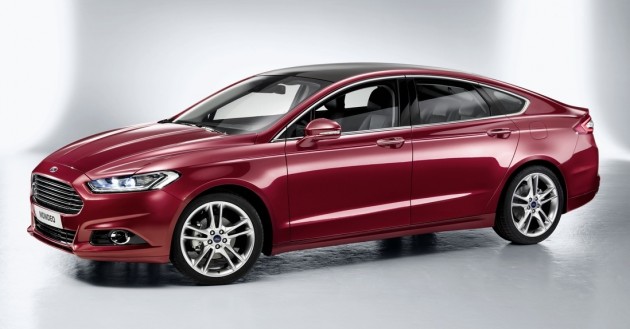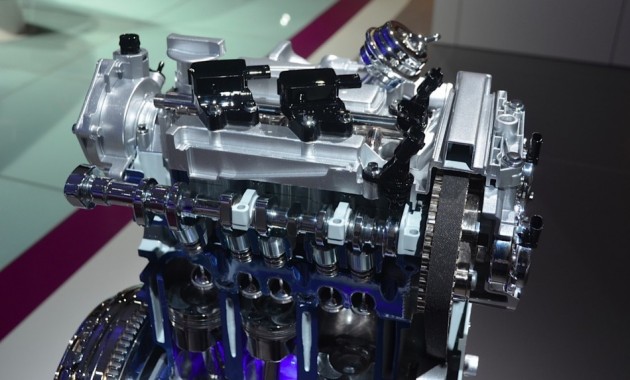Ford introduced its fifth-generation Mondeo in China earlier in the week, and while the advent of the Blue Oval’s flagship in the republic isn’t big news, the announcement of what powers it is – a 1.5 litre EcoBoost engine makes its debut on the car, making the Ford Mondeo the first car in its segment to be powered by an engine of such displacement.
The 1.5 litre is a three-cylinder derivative of the 1.0 litre EcoBoost unit, and is the fifth and latest member to join Ford’s global family of EcoBoost turbocharged engines, which also includes 1.6 and 2.0 litre four-cylinder units as well as a 3.5 litre V6 variant, which is available in two output tunes.
It’s at the upper threshold of the three-pot’s design displacement limit, which has a maximum capacity of 500 cc per cylinder. The 1.5 litre EcoBoost offers 177 hp at 6,000 rpm and peak torque of 240 Nm from 1,500 to 4,500 rpm. The unit includes an integrated intake manifold and water-cooled charge air cooler, which allows for a more efficient feed of air into the engine, as well as a clutch-controlled water pump.
Other than the new 1.5 litre job, the Mondeo will also get the 2.0 litre EcoBoost unit for the Chinese market, though the unit has a slightly detuned power output of 228 hp at 5,500 rpm and 340 Nm at 4,000 rpm.
Looking to sell your car? Sell it with Carro.

















AI-generated Summary ✨
Comments generally express enthusiasm for Ford’s new 1.5L EcoBoost 3-cylinder engine, highlighting its impressive 177hp and torque, and praising Ford's advanced technology. Some compare it favorably to larger engines for fuel efficiency and performance, while a few express concerns about maintenance, reliability, and servicing in Malaysia, noting potential difficulties with mechanics unfamiliar with such engines. There is appreciation for Ford’s engineering efforts to optimize small engine performance and contention that such technology surpasses traditional NA engines or turbochared designs from other brands. Some off-topic discussions about other engines or brands were filtered out, focusing instead on the engine’s design, performance, and expected market reception. Overall, comments emphasize excitement for the engine’s potential and skepticism about reliability and servicing challenges.